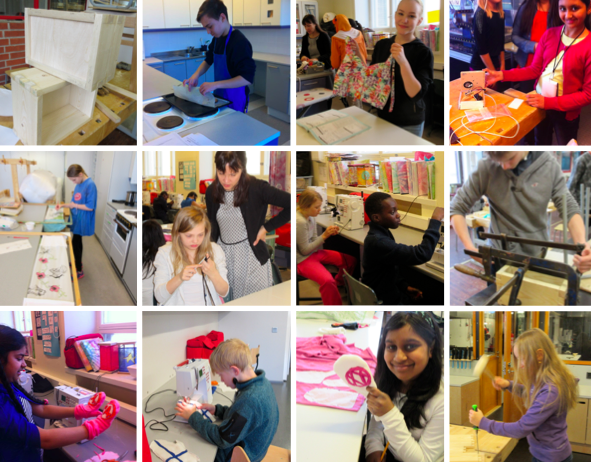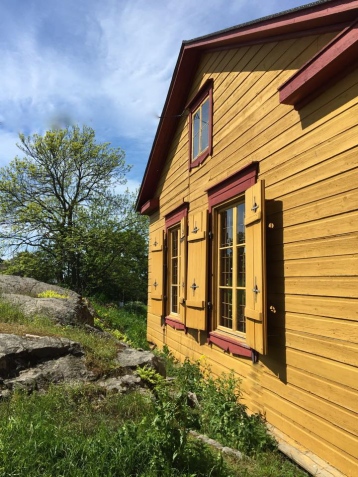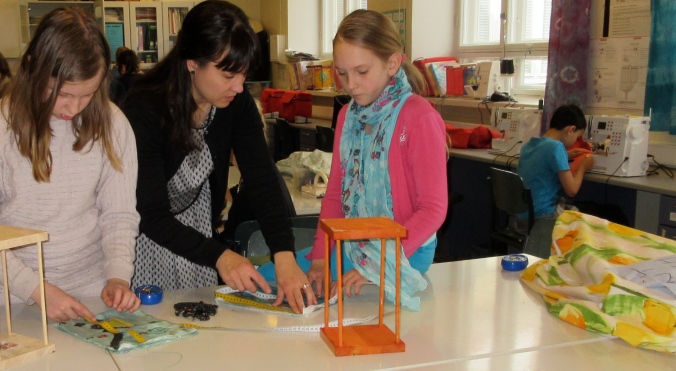 We don’t make anything anymore. Don’t get me wrong- I know there are several talented crafty people in this world who have dedicated their lives to creating beautiful and functional works of art. However, in today’s world of instant gratification and consumerism, it is unusual to find someone who creates most of their own possessions.
We don’t make anything anymore. Don’t get me wrong- I know there are several talented crafty people in this world who have dedicated their lives to creating beautiful and functional works of art. However, in today’s world of instant gratification and consumerism, it is unusual to find someone who creates most of their own possessions.
When was the last time you wore a homemade outfit? When did you last build shelves, a stool or a doorbell on your own? Why would you waste your time and energy building something that you could easily buy at the store for less than it would cost to buy the tools and materials to make?
The art of creation is slowly dying. No one sews, or builds, or does their own wiring anymore. If something is broken, instead of fixing it, we simply buy a new version of the deceased article. Woodworking, sewing and knitting are becoming obsolete archaic skills that do not have a place in our world…. let alone our classrooms.
We don’t have enough time to teach the basics of math and English. Why would we waste time on knitting? Yet, these so called archaic skills are at the FOUNDATION of Finnish Education.
One of the aspects of Finnish education that has made the most sense to me as a math teacher has been the early focus on something called Craft Education. From as early as 1st grade, students spend a few hours a week learning how to do useful handy skills such as sewing, woodworking, knitting, cooking, cleaning, sawing, drilling, hammering, and much much more!
Finland does not see these basic skills as outdated or obsolete. Instead they recognize the immeasurable value in teaching a child to create something from scratch. I spent a few days observing craft education classes and I left feeling like I had found the missing link to education!

My education in this area started in a 4th grade class where students were sewing mittens on a SEWING MACHINE! The class started with the students sitting at their desks. They had already retrieved their projects and were waiting eagerly to get to work.
The teacher introduced me to the class and then she simply said, “Ok, you may start working.” The students immediately sprang into action. They didn’t ask her a million questions of what was next, or what they should do. And even though they were all at different parts of the construction process, they all knew what they personally needed to get done and they got to work.
After the 4th grade textile class I went downstairs to watch the corresponding 4th grade woodworking class. Here the students were making doorbells. They had made the wood frame from scratch, nailed it together and were now in the wiring process.
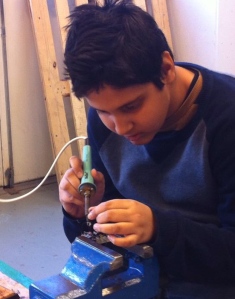 I watched as a 4th grade boy used a soldering iron to weld together two small wires in his doorbell. The teacher was not even in the same room! The teacher had taught the processes previously and simply trusted the student to follow the instructions.
I watched as a 4th grade boy used a soldering iron to weld together two small wires in his doorbell. The teacher was not even in the same room! The teacher had taught the processes previously and simply trusted the student to follow the instructions.
I then visited a cooking class, a knitting class, a cleaning class, and another woodworking class. The more I saw of craft education the more convinced I was of the fact that this is Finland’s hidden gem when it comes to education.
What can we learn from Finland’s Craft Education?
1. Strategic Planning:
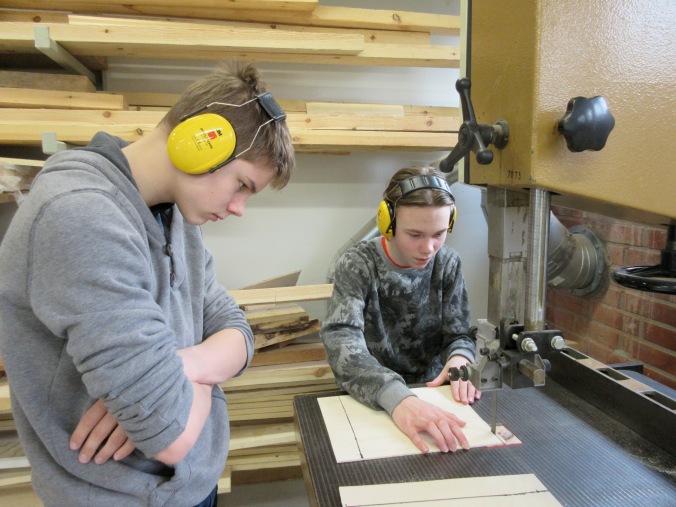
Behind any created object there is usually a game plan or design. It is imprudent and almost impossible to start making anything from scratch without a strategic and logical plan of action. The development and understanding of a strategic design is the foundation of craft education and a very valuable part of the education process.
Craft education helps mold and develop the child as a strategic and logical thinker. It provides the student real life applications though projects that allow them to create a blueprint to find a solution to their problems. These are not skills that can be gained from memorizing facts from a book. And you can’t regurgitate this information on a test.
Instead it trains students’ brains to naturally conquer tasks in a systematic linear progression. This is what we want our students to be able to do at the end of their academic career. Yet it can only be gained from the practical application of doing something, building something and creating something. Finland understands this.
2. Problem Solving
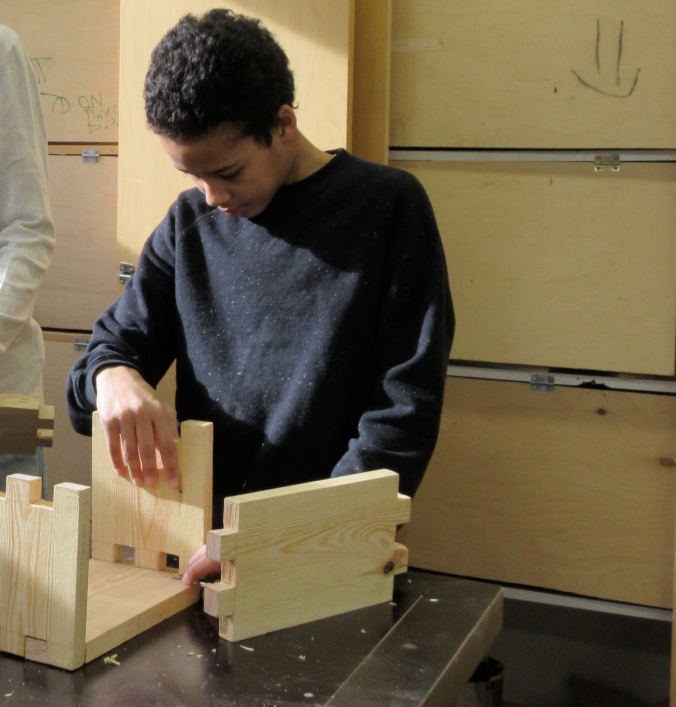 We can all agree that creating a strategic plan is essential to fixing or building anything in life. However, we also know that things don’t always go perfectly according to the plan.
We can all agree that creating a strategic plan is essential to fixing or building anything in life. However, we also know that things don’t always go perfectly according to the plan.
There are inevitably going to be problems and obstacles along the way. This happens on a daily basis in a craft education classroom. And when something goes wrong with a student’s project it is up to the student to figure out how to fix it- not the teacher.
The students in this type of classroom are constantly forced to adjust and then readjust their plan along the way. This was most apparent during my visit to a 7th grade woodworking class where they were piecing together the wooden boxes they had spent the last several months creating.
The students were learning the skill of joinery, a method that uses no nails just a precise series of interlocking joints. This technique requires precision and careful attention to detail. The students worked diligently because they knew each side must be measured and cut perfectly.
However, when they put the boxes together some noticed the joints were not fitting as well as they would like. Therefore they needed to figure out which parts to chisel off in order to create a perfect fit. They saw a problem and they had to figure out how to fix it. This is how problem solving should be taught.
3. How to Properly Use and Respect Equipment
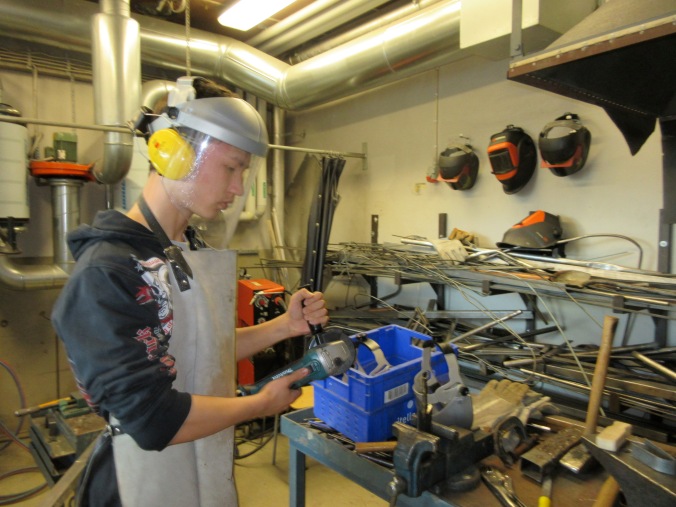 Something that I found really intriguing was how skilled the students were at using the tools and machines necessary to perform their needed task. Sometimes these were very dangerous or complex pieces of equipment. I saw students using equipment ranging from soldering irons, jigsaws, drills, hand saws, hammers, expensive sewing machines, ovens, industrial sanders and much more.
Something that I found really intriguing was how skilled the students were at using the tools and machines necessary to perform their needed task. Sometimes these were very dangerous or complex pieces of equipment. I saw students using equipment ranging from soldering irons, jigsaws, drills, hand saws, hammers, expensive sewing machines, ovens, industrial sanders and much more.
Yet the students used these tools independently with skill and respect. This is due to training the kids at an early age how to follow set guidelines and procedures when it comes to using a tool. (Again this is a very valuable skill set for any employer.)
I told a group of third grade students using a sewing machine how impressed I was with them and that I had no idea how to use one let alone how to thread a bobbin. They thought that was hilarious. I am an adult after all! I should know how to thread a bobbin! Any child can do it. Thankfully a 3rd grade boy took me over to his sewing machine and showed me how it was done so that I wouldn’t embarrass myself next time.
In the wood working class a few students asked the teacher if they could use the industrial sander to finish their box. The instructor said yes and showed the students how to use this very intimidating tool. He demonstrated with a piece of wood that it would take less than two seconds to sand off the top part of their fingers and how to avoid that accident. Then he left them to do the task on their own. I was amazed.
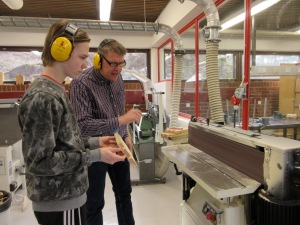
It should also be noted that this is also due to Finland’s underlying trust in students. My American mind was in a state of panic most of the time I was in a woodworking class. I kept thinking- You can’t trust a 7th grader to run that dangerous machine without an adult supervising his every move! However, the teacher trusts the students to follow the safety procedures and guidelines. It is expected that the student will follow the rules and therefore the teacher allows the student to actually do the work.
Not only do students know how to use the equipment they are also trained in how to take care of and clean the equipment. At the end of the day the students are expected to clean and pack up all of their tools. This is another valuable lesson.
4. Independence
 Craft education teaches students how to think and work independently. They have the freedom to make and learn from their mistakes. There is no micro managing in Finnish Education. The students know what they are supposed to do and are then given the freedom to do it. This is a skill that carries over into all other academic fields. I have noticed that Finnish students are very good at independent work and I think that craft education is the reason.
Craft education teaches students how to think and work independently. They have the freedom to make and learn from their mistakes. There is no micro managing in Finnish Education. The students know what they are supposed to do and are then given the freedom to do it. This is a skill that carries over into all other academic fields. I have noticed that Finnish students are very good at independent work and I think that craft education is the reason.
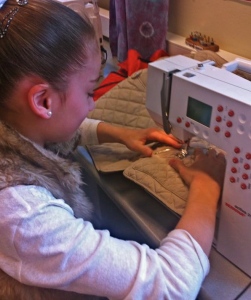 Not only does working on independent projects teach a student how to work on a task until it is finished, the skills themselves teach students how to be independent and do things for themselves.
Not only does working on independent projects teach a student how to work on a task until it is finished, the skills themselves teach students how to be independent and do things for themselves.
At the beginning of a 5th grade class I noticed one girl got to class a little early to use the sewing machine. She had ripped her coat pocket on the way to school and needed to patch it up. She didn’t ask the teacher. She didn’t complain. She went to the machine, threaded the bobbin and fixed it herself.
5. Motor Skills and Focused Energy
 Knitting and crocheting are also skills taught to all students at a young age. Again this sounds like a skill reserved for little old ladies not young nimble children. However, all of the recent neuroscience claims that there is a direct correlation between fine motor skills, hand eye coordination and the development of the brain. It also teaches students to concentrate and focus. I have heard about teachers in Finland giving a knitting project to a boy who has problems with sitting still and listening in class. This gives him something to do with his hands, teaches him to focus and also allows him to listen to the lesson. This is a great skill to have! Plus, you end up with several beautiful scarves and socks.
Knitting and crocheting are also skills taught to all students at a young age. Again this sounds like a skill reserved for little old ladies not young nimble children. However, all of the recent neuroscience claims that there is a direct correlation between fine motor skills, hand eye coordination and the development of the brain. It also teaches students to concentrate and focus. I have heard about teachers in Finland giving a knitting project to a boy who has problems with sitting still and listening in class. This gives him something to do with his hands, teaches him to focus and also allows him to listen to the lesson. This is a great skill to have! Plus, you end up with several beautiful scarves and socks.
7. Gender Equality:
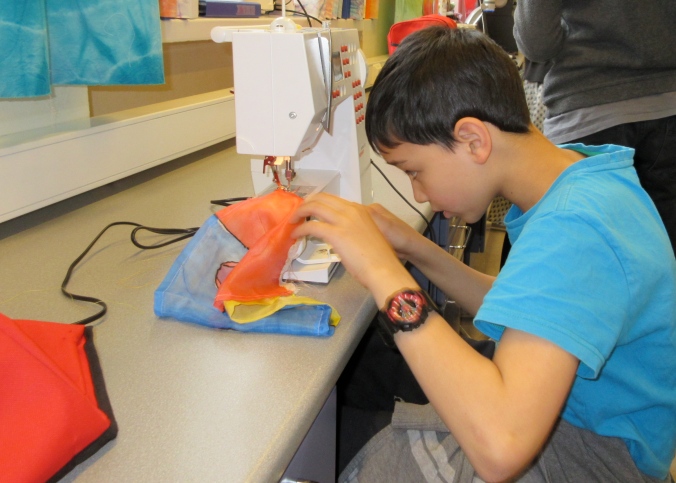
What I love most about craft education is that it takes away gender stereotypes. Both boys and girls learn how to knit and sew and cook. Both boys and girls learn how to woodwork and hammer and use power tools. They are seen as equally important skills and not just for one gender or the other.
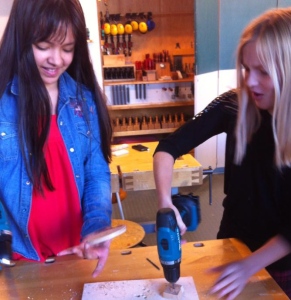 I asked some boys if they liked their textile class. They said they liked the lamps shades they were designing and seemed to be genuinely proud of what they had created and how they had made it their own.
I asked some boys if they liked their textile class. They said they liked the lamps shades they were designing and seemed to be genuinely proud of what they had created and how they had made it their own.
I talked to some girls about if they liked woodworking class. They loved it. They said they really liked using the power tools. I asked them which one was their favorite. The girl answered the drill. She then went over to the cabinet got out two drills and she and her friend did a contest to see who could drill through a piece of wood the fastest. My head was still reeling at the fact that these 3rd graders were using power tools! I mean this is so cool!
8. Math Skills
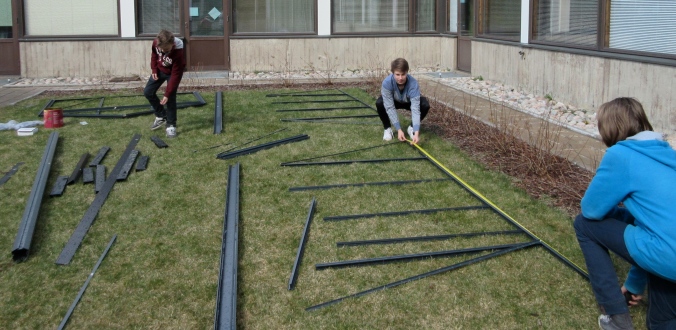
Ok, I had to throw this one in there as a math teacher. Students use a lot of math when they are measuring, designing and planning their projects. I saw a group of older students designing a greenhouse for the school. They were using trigonometry to figure out the angles of the greenhouses design and placement in the lawn.
They also use math when they are cooking. I can’t tell you how often I am amazed at the number of 7th graders in my U.S. classroom who have no idea how to use a ruler or a measuring cup. They simply have not been asked to use these objects regularly and they just can’t do it.
U.S. students never get to use math in real life applications. We don’t have time for it. The result is that students don’t see the practical use for mathematics and therefore disdain it as a subject. Sometimes I feel like we are too busy teaching students math to let them use the math.
Craft education allows them to see first hand how mathematics is used and applied in the real world. It shows students instead of just telling them that math is important and applicable to their lives.
9. Patience and Perseverance
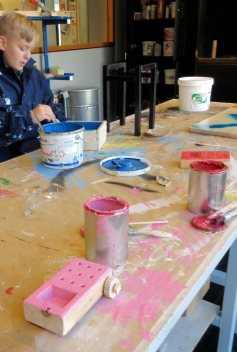 The projects the students are working on in these classes cannot be finished in one or two lessons. They are often the result of months of hard work. It often takes an entire term to do just one project. This teaches students patience and perseverance. We live in a society obsessed with instant gratification. Making something, especially something worthwhile, is often a slow and tedious process. Delayed gratification and the ability to stick with a project until the very end is an important life lesson to teach students.
The projects the students are working on in these classes cannot be finished in one or two lessons. They are often the result of months of hard work. It often takes an entire term to do just one project. This teaches students patience and perseverance. We live in a society obsessed with instant gratification. Making something, especially something worthwhile, is often a slow and tedious process. Delayed gratification and the ability to stick with a project until the very end is an important life lesson to teach students.
10. Life Skills and Responsibility

Home economics classes start quite young in Finland. This class is for all students and it teaches them to cook, clean, and plan healthy meals. It also teaches them how to shop, budget money and do personal finances. These are all life skills necessary for the real world. (These are also great ways to teach mathematics!)
When I was observing a cooking class, one group of students finished before the others and the teacher asked them to pick up some materials from the store for the next lesson. She then gave a group of four 8th graders a shopping list, her credit card and sent them on their way. They left the school campus, walked a few blocks to the store, got the materials and returned 20 minutes later.

Again, there is this all encompassing feeling of trust that does not exist in the U.S. We would NEVER allow students to leave school grounds in the middle of the school day unsupervised- let alone take a prepaid card and go shopping without parental consent! It just wouldn’t happen. We are too worried about lawsuits and accidents. I am realizing just how paranoid we are in the states.
11. Confidence and Pride
 The biggest takeaway from my experiences in a craft classroom was the very apparent pride displayed on the child’s face as they showed me their project. They had made something. They accomplished something and they take great pride in that.
The biggest takeaway from my experiences in a craft classroom was the very apparent pride displayed on the child’s face as they showed me their project. They had made something. They accomplished something and they take great pride in that.
They also have the confidence to know that they can build or fix something in the future. There is no need to ask someone else to fix something that is broken. This self confidence and pride is a gift that will stay with them their whole lives. I have talked to some adults who remember their projects from when they were children. A 30+ year old man bragged about awesome soccer knee pads he made in middle school and how his children use them to this day.
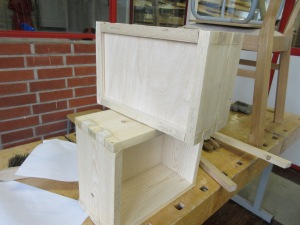
When you make something you take ownership of that item in a very unique and powerful way. Finland understands the power of creating, fixing and building. It gives students the life skills and confidence they need in order to be successful in life.
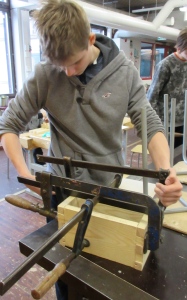 It gives them the developmental tools to become life long thinkers, independent workers, strategic planners and logical problem solvers. Instead of removing these programs from our U.S. classrooms we need to be incorporating them at a younger age. Kids need to see the practical applications of their education.
It gives them the developmental tools to become life long thinkers, independent workers, strategic planners and logical problem solvers. Instead of removing these programs from our U.S. classrooms we need to be incorporating them at a younger age. Kids need to see the practical applications of their education.
Instead of just talking about the importance of problem solving or adding a few story problems to the end of our lessons, we need to actually give our students something worthwhile to create, to build and to call their own. We need to let them USE their education.
